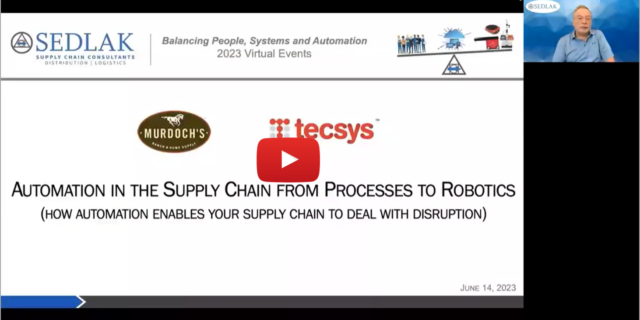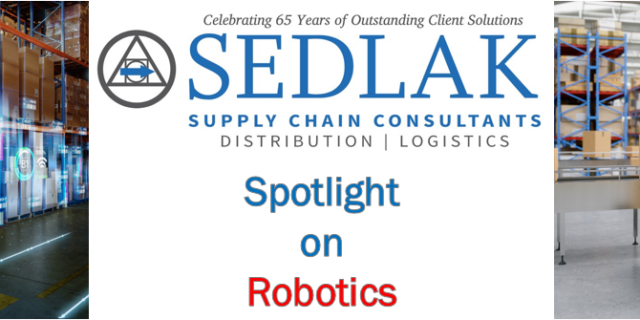Crucial Preparations for Optimizing Current- and Future-State Peak Season Performance
October 21, 2019 By: Senior Management | Topics: Operations Improvement, Retail & CPG, Supply Chain Now is the critical time to perform supply chain execution evaluations for peak season planning. Listed below are some recommendations to consider regarding a few key factors influencing 2019 end-of-year performance. Taking action now will allow your company to introduce lessons-learned improvements that are beneficial to 2020 operational performance.
Now is the critical time to perform supply chain execution evaluations for peak season planning. Listed below are some recommendations to consider regarding a few key factors influencing 2019 end-of-year performance. Taking action now will allow your company to introduce lessons-learned improvements that are beneficial to 2020 operational performance.
These tips are intended to focus on peak season informational capture during the fast-moving pace and complex flow interactions across key functional areas of the operation. These involve not only product movement but also the critical, parallel capture of data needed for inventory control and workload management.
The majority of retailers are about to experience the annual mass migration when peak to average (PTA) fulfillment order and unit quantities double, triple or more in a matter of virtually hours. All too often companies are exceeding—or dangerously close to or exceeding—storage and/or throughput handling capacities. The potential negative results span a breadth of serious elements impacting current and future business survival, such as customer service disappointments due to missed holiday delivery expectations; financial costs of upgrading to express shipment levels and/or the need for multiple shipments for the same order; shutting down the website channel to dig out of the backlog; or, more seriously, the loss of customer loyalty and future sales.
Don’t be in the position of wishing you had been more prepared!
Here are a few tips and approaches for capturing the results of day-in-the-life flows and handling barriers confronting you during potentially chaotic peak season operations.
1. Self-police your operation to determine whether a solid training program is in place.
- Conduct functional team-lead sessions to confirm SOPs are understood.
- Confirm an effective training process is in place for seasonal employees.
2. Capture plan vs. actual statistics on a daily basis during peak:
- Forecasted vs. actual units ordered (or lines dependent on the business).
- Planned vs. actual staffing in hours, including shift and overtime preparedness plan.
- Planned vs. actual production (lines, orders or units).
- Key performance indicator tracking stats by functional area and/or activity.
- Carryover quantity by day, by area.
- What’s in the pipeline/pool (by type of order if the systems provide).
- Flow exceptions and unexpected inventory issues.
3. Document what is happening at the docks:
- Determine impact of late inbound receipts and dock congestion.
- Compare timing of shipping cutoffs and outbound dock door activity.
- Identify how cutoffs and ship method requirements impact timing of order delivery/batching to the work floor and resource plan.
- Quantify what non-value added measures were taken to meet the cutoffs.
- Document areas of congestion and record suspected causes.
- Determine the incidents of working in rush orders; each represents a missed opportunity to batch the work to improve productivity.
4. When an issue occurs, remember that a photo tells quite the story and helps you recall details later on.
- Take photos during operation, particularly in areas overflowing or underutilized (staging areas, backlog behind VAS stations, replenishment cases staged next to potentially undersized pick locations, jam areas, compliance issues).
- If something doesn’t look right, check it out; your workforce can typically tell you the issue.
- Listen to your front-line teams; typically, they can quickly identify exceptions.
The factors outlined above are things to look out for once the rubber meets the road. Actually, now is the time to initiate a health assessment before the real action starts! Much can be identified up front by asking the right questions and making observations to determine if optimal handling flows have been adopted in your workplace and/or if current handling procedures and measures stack up to best practices in the industry.
Although health check findings can result in recommended but cost-justified capital investments, we all recognize budgets drive resolution directions. However, there are true benefits by taking the time to identify real areas of performance opportunities. These involve benefits that can be realized through procedural and/or process change, development of basic performance measures, incorporating management reporting controls, visiting training needs, and/or simply identifying those work practices that do not comply with earlier established standard operating procedures.
If your operation is near capacity and/or you are faced with internal worry of getting through the peak and making plan, please consider asking Sedlak to help you conduct a forward-thinking assessment of your operation. If you have conducted best planning diligence but encounter unexpected challenges due to external factors during the season, don’t hesitate to call. Independently viewing and capturing issues occurring during peak operations, while your team is addressing possible production-related issues, will provide much-needed information and a more accurate picture of peak performance requirements for you to be better prepared and equipped to optimally perform in 2020.
To our clients, thank you for allowing us to provide continued support. To the other valued businesses in supply chain execution, we welcome an opportunity to earn your trust and assist you in achieving business plan success.
Best of luck in your 2019 peak season.
Sincerely,
Brian R. Neale, Client Executive at Sedlak Supply Chain Consultants





